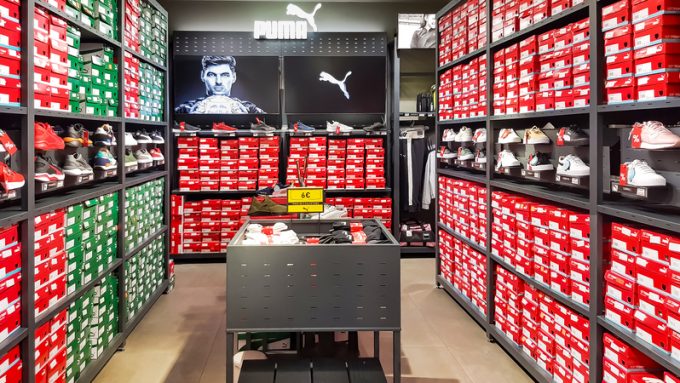Maersk Frankfurt heads for open water as container fire subsides
Maersk Frankfurt, the newbuild box ship that suffered a possible electrical fault and subsequent container ...
TFII: SOLID AS USUALMAERSK: WEAKENINGF: FALLING OFF A CLIFFAAPL: 'BOTTLENECK IN MAINLAND CHINA'AAPL: CHINA TRENDSDHL: GROWTH CAPEXR: ANOTHER SOLID DELIVERYMFT: HERE COMES THE FALLDSV: LOOK AT SCHENKER PERFORMANCEUPS: A WAVE OF DOWNGRADES DSV: BARGAIN BINKNX: EARNINGS OUTODFL: RISING AND FALLING AND THEN RISING
TFII: SOLID AS USUALMAERSK: WEAKENINGF: FALLING OFF A CLIFFAAPL: 'BOTTLENECK IN MAINLAND CHINA'AAPL: CHINA TRENDSDHL: GROWTH CAPEXR: ANOTHER SOLID DELIVERYMFT: HERE COMES THE FALLDSV: LOOK AT SCHENKER PERFORMANCEUPS: A WAVE OF DOWNGRADES DSV: BARGAIN BINKNX: EARNINGS OUTODFL: RISING AND FALLING AND THEN RISING

Confidence in the freight market that retailers are approaching satisfactory inventory levels may be too optimistic, as recent earnings calls continued to note high levels of stock.
Shippers noted a “very challenging orderbook” and that retail would be “very careful committing to orders”.
The news follows a recent decision by toymaker Funko to destroy between $30m and $36m-worth of surplus stock filling its warehouses and increasing costs. Several major retailers don’t see stock levels – and, therefore, re-ordering – meeting demand until the end of the year.
Adidas noted continued high inventory levels in both Europe and the US. CEO Bjorn Gulden told investors this month: “[In] Europe, clearly there is too much inventory. I think in general many retailers have too much inventory compared to their sales.
“I think it’s also fair to say that we, and I think many other brands, maybe have overpriced the product a little bit …[that] together with too much inventory causes even more discount.”
He added that inventory levels in the US were “even higher”, and said: “It’s hurting both retailers and us. And again, this is something we need to work through in 2023. The combination of these two things is a very challenging orderbook for the second half. Retail is very careful committing to orders in the volumes that we would hope for.”
Noting that footwear was easier to carry forward than apparel, Adidas CFO Harm Ohlmeyer said: “We significantly decreased our buying volume going into not only spring/summer ’23, but also, more importantly, forward in ’23. And we are technically repurposing some existing inventory, again primarily footwear, but also where it makes sense moving it to markets where the demand is higher.
“So, we believe, depending on the market, we will be in a much better situation in summertime. But we still need to work with this one over the next couple of months. [We are] buying less, carrying inventory where it makes sense. And this will definitely normalise again through the course of the year.”
Adidas said its sales plans had been “too optimistic”, but that 2023 would “clean up a lot of old mess”.
Meanwhile, rival Nike said it was “making great progress on inventory” and “we’re on track to hit our fiscal ’23 priorities of getting inventory in a healthy position”.
CFO Matthew Friend said the top priority was to “strategically manage excess inventory and drive a quicker return to a healthy pull market”.
He said: “We are confident, looking ahead with strong traffic and retail sales growth and reduced inventory buys for the spring and summer seasons. We are increasingly confident that we will exit the year with healthy inventories across the marketplace.
“Remember, more than six months ago, we strategically reduced our inventory commitments for the spring and summer seasons to ensure that both Nike and our partners can work through excess and early arriving inventory.
“And we’re increasingly confident that we’re going to exit fiscal year ’23 with healthy inventory levels across the marketplace. In fact … we’re going to exit with even leaner inventory than we had anticipated.”
Home Depot, meanwhile, said its inventory at the end of Q4 22 was up by $2.8bn, to $24.9bn. CFO Richard McPhail said: “We’re still pulling forward inventory. We still see extended lead times, and we think 2023 is going to be a year of continued improvement in supply chains.
“The year-over-year inventory increase was the smallest quarterly increase of the entire year. And so we feel good about our inventory productivity.”
Several retailers mentioned lessons learned as they noted how being heavily overstocked had weighed on their balance sheets, along with required discounting. It is likely orders will be made more cautiously in the near future.
Canadian athletic apparel retailer Lululemon will report next week, but it finished Q3 with $1.7bn in inventory, its highest ever. As SeekingAlpha noted: “Lululemon is stuck with elevated amounts of inventory.
“Unlike other apparel brands, Lululemon doesn’t send large amounts of inventory downstream into discount retailers like TK Maxx … so it’s forced to delicately balance clearing inventory while maintaining premium pricing on some assortment of items. Investors will want to see this inventory clear.”
Maersk told The Loadstar this week inventory levels among its customers were “a mixed picture”, but it was expecting to see improved freight demand in Q2.
Comment on this article